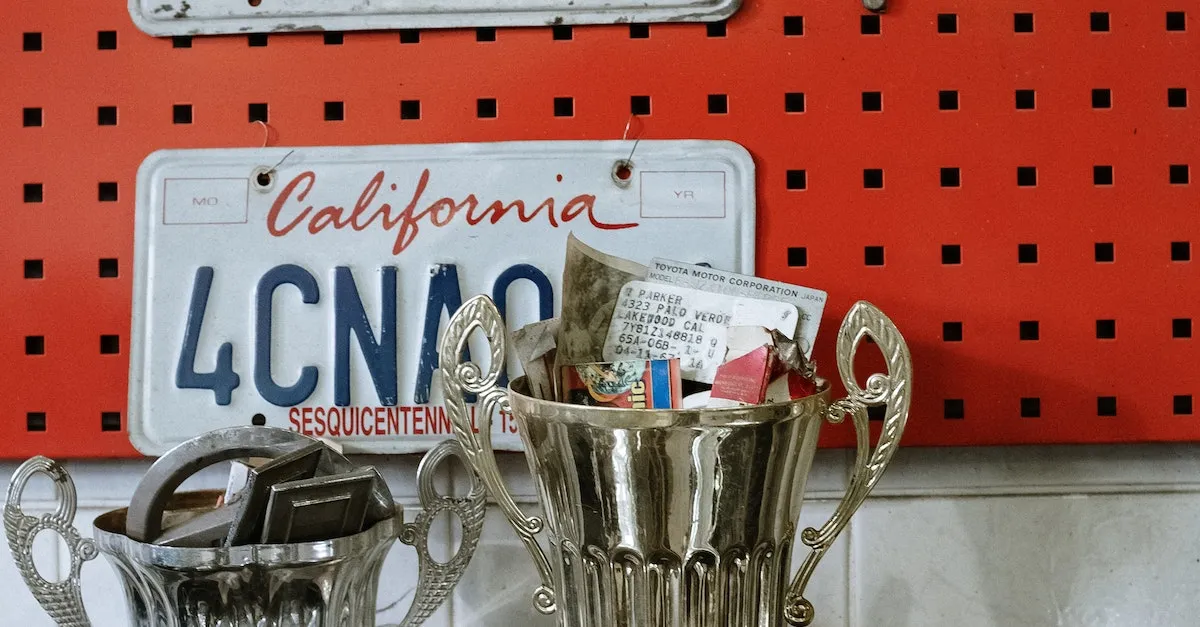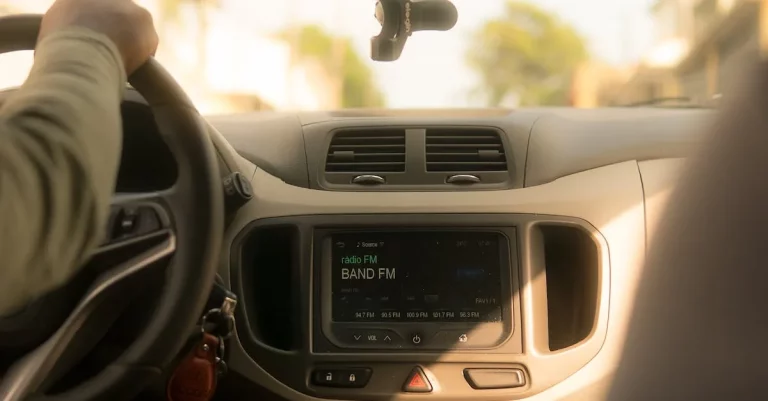Understanding The California License Plate Format: A Complete Guide
With millions of registered vehicles on the road, California uses a standardized license plate format to keep things running smoothly. To the unfamiliar eye, the combination of numbers and letters on CA plates can seem random. But there is actually a precise method to the madness.
If you’re short on time, here’s a quick answer: Modern CA license plates contain 7 characters – a mix of letters and numbers that identify the vehicle registration and help track plates.
The Meaning Behind California License Plate Numbers
Have you ever wondered what the numbers on a California license plate mean? They may seem random, but they actually contain important information about the vehicle and its origins. In this guide, we will break down the different components of a California license plate number and explain their significance.
View this post on Instagram
Order of characters
A California license plate consists of seven characters: a combination of letters and numbers. The order of these characters is not random and follows a specific pattern. The first character is a digit, followed by three capital letters and three digits.
Sequential numbering
The first digit on a California license plate is part of a sequential numbering system used by the Department of Motor Vehicles (DMV).
Here’s how it works:
- Since 1980, California has used a seven-digit format for standard license plates: one number, three letters, then three numbers (e.g., 4ABC123).
- This sequence starts at 1AAA000 and goes all the way up to 9ZZZ999.
- As they run out of plates with a particular leading number, they simply move on to the next one.
Currently, California is issuing plates that start with the number 8. This means you’ll likely see plates like 8XYZ789 on the road.
This system will continue until they reach 9ZZZ999, which is projected to happen sometime in 2027. At that point, the DMV will need to decide on a new format for issuing license plates.
Specialty License Plate Styles and Options
When it comes to license plates, California offers a variety of specialty styles and options for drivers to choose from. These specialty license plates not only add a personal touch to your vehicle but also support various causes and organizations.
Let’s take a closer look at some of the popular specialty license plate styles and options available in California.
Legacy plates
Legacy plates are a great option for those who appreciate the classic look of California license plates. These plates feature designs from the 1950s, 1960s, and 1970s, allowing drivers to showcase their love for vintage cars or simply add a touch of nostalgia to their vehicle.
Not only do these plates give your car a unique and eye-catching appearance, but they also contribute to the preservation of California’s automotive heritage.
Personalized plates
Personalized plates are a popular choice for those who want to make a statement on the road. With personalized plates, you can choose a combination of letters, numbers, and symbols to create a license plate that reflects your personality or interests.
Whether you want to display your name, a favorite phrase, or a clever wordplay, personalized plates allow you to stand out from the crowd and add a touch of individuality to your vehicle.
Special interest plates
Special interest plates are an excellent way to support a cause or organization that you feel passionate about. California offers a wide range of special interest plates, each representing a specific cause or organization.
From environmental conservation to supporting veterans, there’s a special interest plate for almost every interest or cause. By purchasing and displaying a special interest plate, you not only show your support but also contribute to the funding of various programs and initiatives.
View this post on Instagram
Display Requirements for California Plates
Plate size regulations
When it comes to displaying license plates in California, there are specific regulations regarding plate size. According to the California Vehicle Code, all license plates must be a certain size to ensure they are easily visible and legible by law enforcement and other motorists.
The standard license plate size in California is 6 inches by 12 inches. This size allows for clear visibility of the alphanumeric characters and ensures that the plates can be easily mounted on vehicles of different sizes and shapes.
It is important to note that using plates of a different size may result in a citation from law enforcement.
Allowed mounting locations
California also has guidelines regarding the placement of license plates on vehicles. According to the California Vehicle Code, license plates must be securely mounted in a horizontal position on the front and rear of the vehicle.
The front plate should be mounted on the front bumper, at a height of no more than 60 inches from the ground. The rear plate should be mounted on the rear of the vehicle, either on the bumper or on a bracket attached to the vehicle.
Both plates must be visible and unobstructed by any other objects, such as bike racks or trailer hitches. Failure to comply with these mounting regulations may result in a citation.
Understanding the display requirements for California license plates is essential to avoid any legal issues or citations. By following the regulations outlined by the California Vehicle Code and the guidelines provided by the DMV, motorists can ensure that their license plates are displayed correctly and in compliance with the law.
Importing Out-of-State Vehicles and Reissuing Plates
When it comes to importing out-of-state vehicles into California, there are certain steps and requirements that need to be followed. One of the first things you’ll need to do is register your vehicle with the California Department of Motor Vehicles (DMV).
This can typically be done by visiting your local DMV office or by completing the necessary paperwork online.
Once you have registered your vehicle, you will need to obtain California license plates. The process for reissuing plates will depend on the specific circumstances of your situation. If you have a valid out-of-state registration and want to keep the same license plate number, you can typically request a reissuance of plates from the California DMV.
However, if you want to obtain new license plates, you will need to surrender your old plates and apply for new ones.
Requirements for Reissuing Plates
In order to reissue plates, you will need to meet certain requirements set by the California DMV. These requirements may include:
- Valid proof of vehicle ownership
- Proof of insurance
- Verification of the vehicle’s identification number (VIN)
- Payment of any applicable fees
If you meet these requirements, you should be able to successfully reissue plates for your out-of-state vehicle in California. It’s important to note that the specific documentation and fees required may vary depending on your unique situation, so it’s always best to consult with the California DMV for the most up-to-date and accurate information.
View this post on Instagram
How License Plates Are Tracked and Renewed
License plates play a crucial role in identifying vehicles and ensuring their proper registration and renewal. In California, license plates are tracked and renewed through a systematic process that involves both the Department of Motor Vehicles (DMV) and law enforcement agencies.
License Plate Tracking
License plates are tracked using a combination of physical and digital methods. When a vehicle is registered, it is assigned a unique license plate number that is linked to the vehicle’s identification number (VIN).
This information is stored in a database maintained by the DMV, allowing law enforcement agencies to access vehicle details when needed.
The physical tracking of license plates is done through the use of automated license plate recognition (ALPR) systems. These systems use cameras to capture images of license plates and then compare them to a database of known plates.
This technology enables law enforcement agencies to quickly identify vehicles that are involved in criminal activities or have expired registrations.
License Plate Renewal
License plate renewal in California is a straightforward process that ensures vehicles remain legally registered. The DMV sends out renewal notices to vehicle owners several months before the expiration date.
These notices include information on how to renew the registration, the required fees, and any necessary documents.
Vehicle owners have several options for renewing their license plates, including online, by mail, or in person at a DMV office. Online renewal is the most convenient option and can be done through the DMV’s official website.
By providing the necessary information and payment, vehicle owners can renew their license plates from the comfort of their own homes.
Once the renewal is complete, the DMV issues a new registration sticker that is affixed to the license plate. This sticker indicates that the vehicle’s registration is valid for the next year. It’s important to note that failure to renew license plates can result in penalties, such as fines or the suspension of driving privileges.
Conclusion
With an array of plate styles and a complex numbering system, California license plates may seem confusing to decode. But each component serves a specific purpose for vehicle identification and registration. Understanding the formats provides insight into the state’s massive DMV administration.








